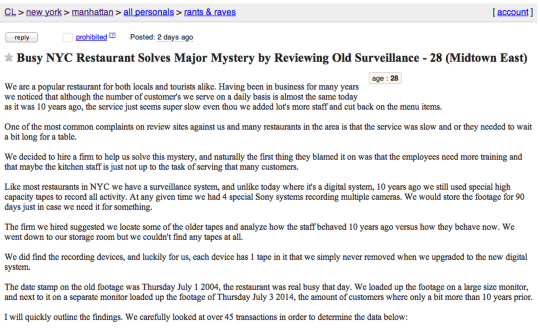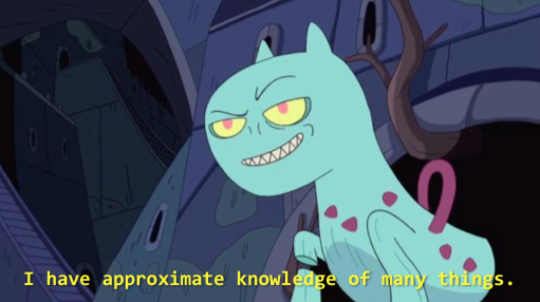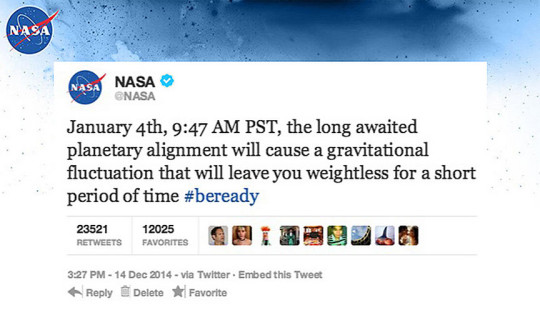Fake news and images are flourishing and even Snopes can’t hold back the tide of belief. Marketers should be taking notes, not to create their own fake campaigns but to understand the psychology that makes it possible and connect that to digital marketing trends.
We Want To Believe

Agent Mulder, of the X-Files, was famous for his desire to believe in aliens and all sorts of other phenomena. The truth is, we all want to believe. Maybe not in aliens but a host of other things. It’s not that we’re gullible, per se, but that we are inherently biased and seek what feels like the truth.
One of the pieces that fooled some of my colleagues was the story about a busy restaurant who’d commissioned research on why service ratings had declined over time.

This was a post on Craigslist in the rants & raves section. Think about that for a moment. This is not a bastion of authenticity. But the post detailed patrons’ obsession with their phones and the inordinate amount of time they took texting and taking pictures of their food.
This self-absorbed, technology-obsessed customer was the real problem. Many reported this ‘research’ as fact because the findings were ones that people wanted to believe. Too many of us have witnessed something similar. We have experience that creates a bias to believe.
We wanted the story to be true because it felt right and matched our preconceptions and beliefs.
The Subversive Jimmy Kimmel
While Jimmy Fallon may be the more affable of late night hosts, Jimmy Kimmel has been doing what I think is some ground-breaking work. His most popular pranks have exposed our desire to believe.
Twerking was jumping the shark and this video tapped into our collective eye-roll of the practice. But less than a week later Kimmel revealed that it was all a hoax.
He didn’t stop there though. The next time he enlisted Olympian Kate Hansen to post a video that purportedly showed a wolf wandering the halls at the Sochi Olympics.
Once again, Kimmel revealed that while it was a wolf, it wasn’t anywhere near Russia. I’m not sure people give Kimmel enough credit. He made people believe there were wolves roaming the halls at the Olympics!
Now, why did we believe? We believed because the narrative was already set. Journalists were complaining about the conditions at Sochi. So when the wolf video appeared and it was endorsed by an Olympic athlete no less, well, we fell for it. It matched our expectations.
It’s not about the truth, it’s about it making sense.
Experience, Belief and Marketing

So how does our desire to believe connect to marketing? Marketers should be figuring out how to create a narrative and set expectations.
Content marketing is popular right now because it provides us the opportunity to shape expectations.
I’ve written quite a bit about how to maximize attention. If you only remember one thing from that piece it’s that we’re constantly rewriting our memory.
Every interaction we have with a site or brand will cause us to edit that entry in our head, if even just a little. Each time this happens marketers have an opportunity to change the narrative and reset expectations.
For a restaurant this means that a bad meal, even after having numerous good ones in the past, can have a serious impact on that patron’s perception and propensity to return. I used to love eating at Havana, a nearby Cuban restaurant. My wife and I had many great meals (and Mojitos) there. But about a year ago we had a sub-par dinner.
Because we’d had so many good meals before we wrote it off as an aberration. This is an important thing to understand. Because what it really means is that we felt like our experience didn’t match our expectation. But instead of changing our expectation we threw away that experience. You should get a raise if you’re able to pull this off as a marketer.
We returned a few months later and it was another clunker. This time we came to the conclusion that the food quality had simply taken a nose dive. We haven’t been back since. Our perception and expectation changed in the span of two bad experiences.
Content, in any form, follows the same rules. Consistently delivering content that reinforces or rewrites a positive brand expectation is vital to success.
Know The Landscape

Our experiences create context and a marketer needs to understand that context, the landscape, before constructing a content strategy. Because it’s not about the truth. It’s about what people are willing to believe.
All too often I find companies who struggle with this concept. They have the best product or service out there but people are beating a path to their competitor(s) instead. It’s incomprehensible. They’re indignant. Their response is usually to double-down on the ‘but we’re the best’ meme.
Nearly ten years ago I was working at Alibris, a used, rare and out-of-print book site. Within the bookselling community the Alibris name was mud. The reason could be traced back to when Alibris entered the market. The Alibris CEO was blunt, telling booksellers that they would be out of business if they didn’t jump on the band wagon.
He was right. But the way the message was delivered, among other things, led to a general negative perception of the brand among booksellers, a notoriously independent bunch. #middlefingersraised
How could I change this negative brand equity? Did I just tell sellers that we were awesome? No. Instead I figured out the landscape and used content and influencer marketing to slowly change the perception of the brand.
Our largest competitor was Abebooks. So I signed up as a seller there, which also gave me access to their community forum. It was here that I carefully read seller complaints about the industry and about Abebooks itself. What I came to realize was that many of their complaints were actually areas where Alibris excelled. Sellers just weren’t willing to see it because of their perception (or expectation) of the brand.
So every month in our seller newsletter I would talk about an Alibris feature that I knew would hit a nerve. I knew that it was a pain point for the industry or an Abebooks pet peeve. Inevitably, these newsletter items were talked about in the forums. At first the response went a little like this. “Alibris is still evil, but at least they’re doing something about this one thing.”
At the same time I identified vocal detractors of our brand and called them on the phone. I wanted them to vent and asked them what it would take for them to give Alibris a try. My secret goal was to change their perception of the brand, to humanize it, and neutralize their contribution to the negative narrative in the community.
It didn’t happen overnight but over the course of a year the narrative did change. Booksellers saw us as a brand trying to do right by them, perhaps ‘seeing the error of our ways’ and forging a new path. They gave us the benefit of the doubt. They grudgingly told stories about how sales on Alibris were similar to those on Abebooks.
I’d changed the narrative about the brand.
I didn’t do this through cheerleading. Instead, I led the community to content that slowly rewrote their expectations of Alibris. I never told them Alibris was better, I simply presented content that made them re-evaluate their perception of ‘Abebooks vs. Alibris’.
Influencer Marketing
Why do some of these fake stories take hold so quickly? The Sochi wolf had a respected Olympic athlete in on the gag. She was a trusted person, an influencer, with no real reason to lie.

People wouldn’t have believed this false weightless claim if it hadn’t been delivered as a (spoofed) Tweet from NASA’s official Twitter account. Our eyes told us that someone in authority, the ultimate authority in this case, said it was true. That and we wanted to believe. Maybe this time in something amazing. Not aliens exactly but close.
So when we talk about influencer marketing we’re talking about enlisting others who can reinforce the narrative of your brand. These people can act as a cementing agent. It’s not so much about their reach (though that’s always nice) but the fact that it suddenly makes sense for us to believe because someone else, someone we trust or respect, agrees.
At that point we’re more willing to become evangelizers of the brand. That’s the true value of influencer marketing. People will actively start passing along that positive narrative to their friends, family and colleagues. If you’re familiar with the Net Promoter concept you can think of influencer marketing as a way to get people from passives (7-8) to promoters (9-10).
Influencer marketing converts customers into evangelizers who actively spread your brand narrative.
Justin Timberlake Is A Nice Guy?

Take my opinion (and probably yours) of Justin Timberlake. He seems like a really nice guy, right? But I don’t know Justin. I’ve never met him and odds are neither have you. For all we know, he could be a raging asshole. But I think he isn’t because of a constant drip of content that has shaped my opinion of him.
He’s the guy who is willing to do crazy stuff and poke fun at himself on SNL. He goes on prom dates. He’s the sensitive guy who encourages a musician in a MasterCard commercial. He celebrates at Taco Bell. I don’t even like his music but I like him.
The next thing I want to say is that it probably helps that he really is a nice guy. But I honestly don’t know that! I want to believe that but I’m also sure he has a very savvy PR team.
Uber Is Evil?

Uber is a great example of when you lose control of the narrative. A darling of the ‘sharing economy’ Uber might torpedo that movement because they’re suddenly seen as an uber-villain. (Sorry, I couldn’t help it.)
Once again, it’s about consistency. It’s about rewriting that perception. So taking a brand down doesn’t happen, generally, with just one gaff. You have to step in it over and over again.
Uber’s done that. From placing fake orders or other dirty tricks against competitors, to threatening journalists, to violating user privacy, to surge pricing, to sexual assault to verbal abuse of a cancer patient.
Suddenly, every Uber story fits a new narrative and expectation. Uber is evil. Is that the truth? Not really. Is it what we want to believe? Yup.
Uber screwed up numerous times but their negative brand equity is partly due to the landscape. There are enough people (me included) who aren’t keen on the sharing economy that took Uber’s missteps as an opportunity to float an alternate narrative, attacking the sharing economy by proxy.
Either way, it became increasingly easy to get stories published that met this new expectation and increasingly difficult for positive experiences to see the light of day. This is explained incredibly well in a case study on Internet celebrity brought to my attention by Rand Fishkin.
The video is 19 minutes long, which is usually an eternity in my book. But this video is worth it. Every marketer should watch it all the way through.
A Content Marketing Framework
I realize that I use a number of terms almost interchangeably throughout this piece. In truth, there are wrinkles and nuance to these ideas. If they weren’t confusing then everyone would be a marketing god. But I want to provide a strawman framework for you to remember and try out.

Our experience with content creates context or bias that changes our belief or perception of that brand resulting in a new expectation when we encounter the brand again.
At any point in this journey a person can be exposed to a competitor’s content which can change context and bias. In addition, influencer marketing and social proof can help reinforce context and cement belief.
I’d love to hear your feedback on this framework and whether it helps you to better focus your marketing efforts.
TL;DR
The lesson marketers should be taking from the proliferation of fake news and images isn’t to create our own fake stories or products. Instead we should be deciphering why people believe and use that knowledge to construct more effective digital marketing campaigns.
The Next Post: Roundup Posts
The Previous Post: Google Autocomplete Query Personalization

2 trackbacks/pingbacks
Comments About We Want To Believe
// 3 comments so far.
Dan Shure // January 20th 2015
AJ
Man… another killer exploration. I’d seen that 86 faked photos post and was at first surprised and then slightly embarrassed that I probably fell for a few of those.
Stephen Covey, when talking about person-to-person relationships uses one of my favorite analogies, which I think applies to your brand-to-person relationships. That is, every person (or brand) has an emotional “bank account”. You deposit and withdraw from it just like a real bank. A new brand has a zero balance – and needs to spend the first few critical years building their emotional bank account with consumers. If it’s built up highly enough, a few withdrawals won’t kill them. But withdraw too many times, and too many times in a row – and that account will run dry!
AJ Kohn // January 20th 2015
Thanks Dan. I’m really fascinated by the fake news and image meme. There was so much more in this post that I cut about news agencies who actually look for this stuff as well as the idea that sometimes we don’t even care if it’s fake. I also cut a part about the video that fooled me and how many of these fake campaigns tap into deep rooted archetypes. Even as a skeptic, I was fooled.
And I really like that Stephen Covey analogy. It’s absolutely true. I think what most people miss is that it can take a long time to build up that bank account, or to change the fortunes in that bank account. People give up way too soon instead of staying the course.
Frank Spohr // January 29th 2015
I can’t help but think about Robert Cialdini’s six principles of influence when I read this article. It is amazing what the “authority” principle can accomplish on the web. I admit I didn’t know some of those videos were hoaxes… and it really just does come down to us giving authority/influencers a free pass to set our expectations.
Sorry, comments for this entry are closed at this time.
You can follow any responses to this entry via its RSS comments feed.